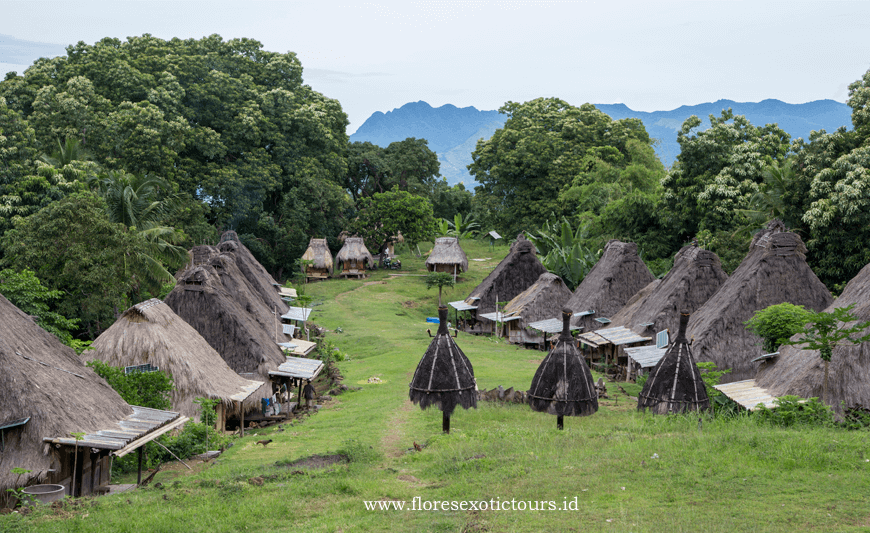Belaraghi Village, Ngada Regency
Belaraghi Village, Ngada Regency
Belaraghi village located near Aimere, can be reach by trekking from Paukate village for 1 hours to this village. The sixteen beautiful traditional houses stand tidily in two parallel rows in a secluded forest clearing, exuding natural harmony. They are renovated in the traditional Ngada architectural style on a regular basis and are therefore in very good condition. Five of the sixteen houses are so-called sao pu’u, first or original houses, which are indicated by a miniature house on the roof; the other five distinct buildings are sao lobo, ‘last houses’, which feature a miniature human figure on the roof. Five is also the number of clans living in Belaraghi at present. Besides the buildings mentioned, the Belaraghi clans are also affiliated with another house type: the sao kaka (kaka means ‘to share’). These houses are considered ‘children’, the descendants of a clan’s sao pu’u and sao lobo. Some of the sao kaka are even located in other villages. The kaka inhabitants support their families in the sao pu’u and the sao lobo financially, materially, and with labor. At the back of the village there is a ritual site with five bhaga-like houses called loka – one for each clan. The loka face the watu lanu, a construction consisting of an elevated stone court framed by ijuk-covered poles. This site is mainly used by the Belaraghi people for the ‘bui loka’, a ceremony to initiate reba, the Ngada-wide new year festivities (link cultural events).
Belaraghi Village,
Ngada regency,
Flores island,
Indonesia









